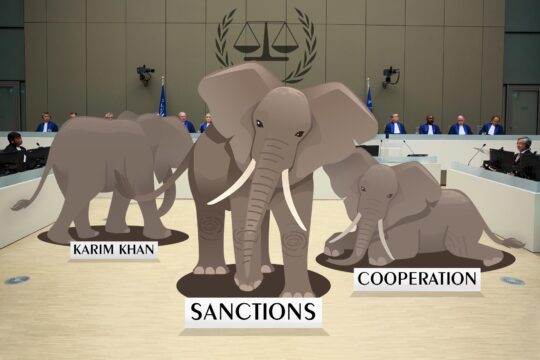After the ceasefire agreement between Israel and Hamas and the liberation on Monday of the remaining living Gaza hostages in a swap for Palestinian prisoners, here is a snapshot of five key elements of the Gaza war.
Israel launched its devastating air and ground campaign after the Palestinian militant group Hamas's unprecedented attack on October 7, 2023.
More than 67,800 Palestinians, mainly civilians, have been killed in Gaza since then, according to official figures from the Hamas-run territory's health ministry.
- Hamas attacks -
At dawn on Saturday, October 7, 2023, during the Jewish festival of Simhat Torah, hundreds of Hamas fighters infiltrate Israel from the Gaza Strip under a hail of rockets.
A total of 1,219 people, mainly civilians, are killed on the Israeli side in the attacks on kibbutzim and a rave music festival, according to an AFP count based on official Israeli figures.
The attackers take 251 hostages back to Gaza, some already dead.
Israel's domestic intelligence agency Shin Bet, and also the army, later acknowledge their failure in preventing the attack. Shin Bet says there was an overarching assessment that Hamas was more focused on "inciting violence" in the occupied West Bank.
It says that "a policy of quiet had enabled Hamas to undergo massive military buildup".
- Hostages -
A total of 141 hostages, eight of them dead, are freed in truces in November 2023 and early 2025. In return Israel releases more than 2,000 Palestinian prisoners.
Other hostages are brought back, alive or dead, by the Israeli army over the months.
The remaining 20 living hostages are freed on Monday, the first stage of a ceasefire accord engineered by US President Donald Trump. The first bodies of the 28 deceased captives -- who include a soldier killed in 2014 -- begin to be repatriated to Israel.
In return Israel frees 1,968 Palestinians.
- Humanitarian crisis -
The air and ground campaign launched by Netanyahu, vowing to destroy Hamas and bring home all the hostages, has left tens of thousands of Gaza's civilians dead, sometimes whole families.
The United Nations said the level of destruction was unprecedented in recent history, with 83 percent of buildings damaged or destroyed, including hospitals and schools.
Most of the Palestinian territory's two million inhabitants have been forced to move.
Humanitarian supplies have been trickling in after the Israeli authorities completely blocked the arrival of aid for 11 weeks from March 2025, only partially easing the blockade in late May.
After months of warnings, a UN agency in August declares a state of famine in a part of the territory, which Israel denies.
In mid-September UN investigators accuse Israel of carrying out a "genocide" in Gaza in a report. Israel rejects the findings and accuses the UN of bias.
In 2024 the International Criminal Court issues arrest warrants for Netanyahu and former defence minister Yoav Gallant for alleged war crimes and crimes against humanity.
- Conflict spreads in region -
Hamas has received the support of Iran and its allies in the region.
From the outset, Lebanon's Hezbollah started firing rockets at Israel from southern Lebanon.
Two months of open war in Lebanon between Israel and Hezbollah from September 2024 is followed by a fragile truce.
In solidarity with the Palestinians, Yemen's Iran-backed Huthi rebels have been targeting shipping off Yemen. They have also carried out missile and drone attacks on Israel, which has hit back with several strikes.
Israel fights a 12-day war against its arch-foe Iran in mid-June, attacking military and nuclear sites. Iran responds with drone and missile barrages targeting Israeli cities.
In 2024 Iran directly attacks Israel twice, also with waves of drones and missiles, in retaliation for a deadly attack on its Damascus consulate blamed on Israel, and for the killing by Israel of Hamas and Hezbollah chiefs.
- Ceasefire and hostages released -
On September 16 Israel launches a major ground offensive in a bid to capture Gaza City, which it says is one of Hamas's last strongholds.
US President Donald Trump on September 29 puts forward a 20-point plan to end the conflict.
It includes a ceasefire, the freeing of the hostages within 72 hours, a staged Israeli withdrawal from Gaza, the disarmament of Hamas and the establishment of a transitional authority made up of technocrats headed by a committee led by Trump.
After four days of indirect negotiations in Egypt between Hamas and Israel through international mediators, including the United States, an accord is struck on October 9.
A ceasefire comes into force, unleashing a mass return by displaced Palestinians towards northern Gaza and setting the clock ticking on the release of the hostages.
Trump and Egyptian President Abdel Fattah al-Sisi on Monday chair a summit on Gaza in Sharm el-Sheikh attended by more than two dozen world leaders including Palestinian Authority president Mahmud Abbas and UN Secretary General Antonio Guterres, but in the absence of Netanyahu or representatives of Hamas.
burs-paj-ot/jmy/amj/smw


